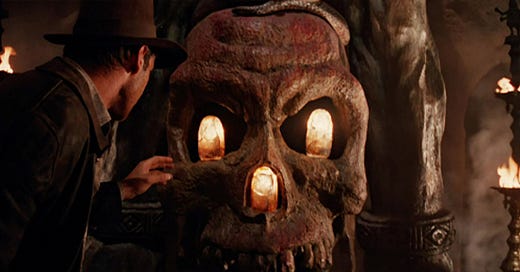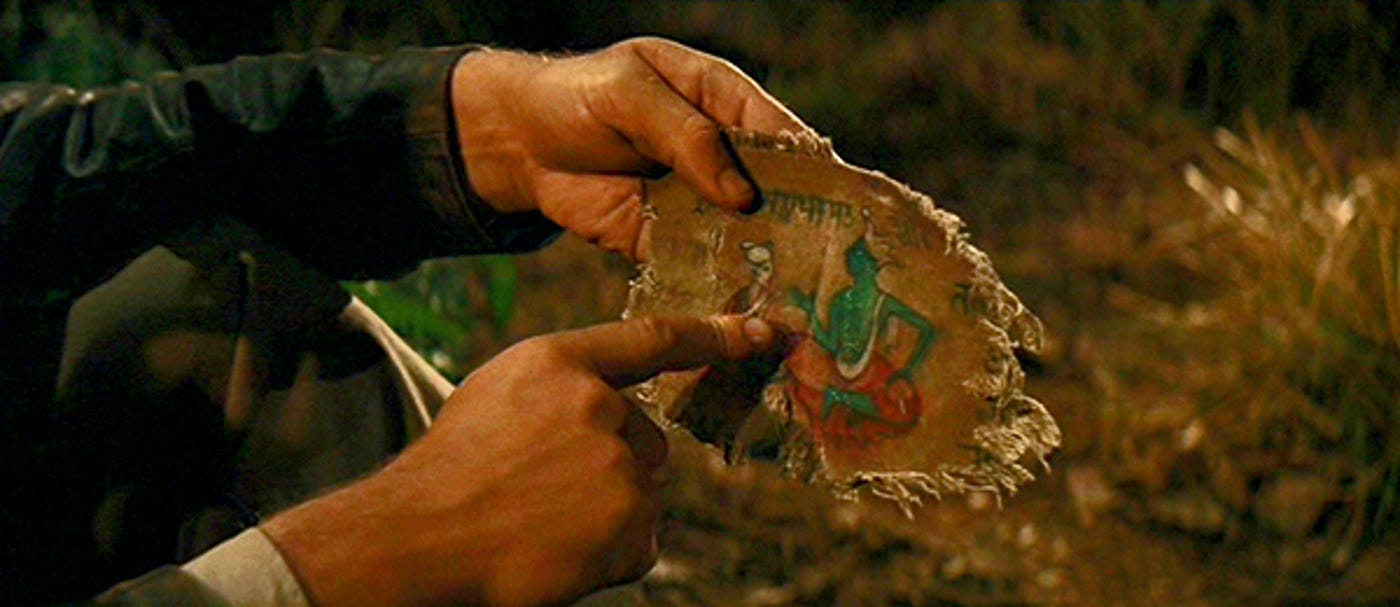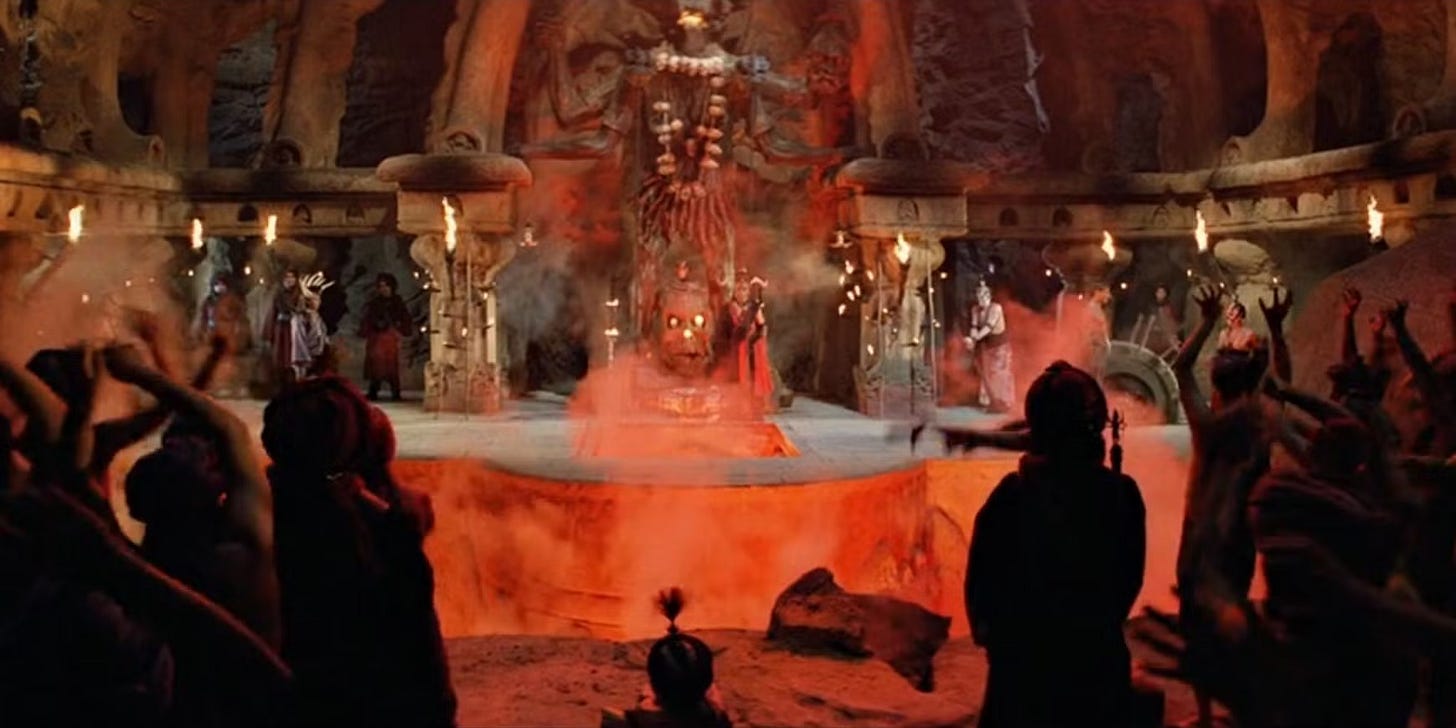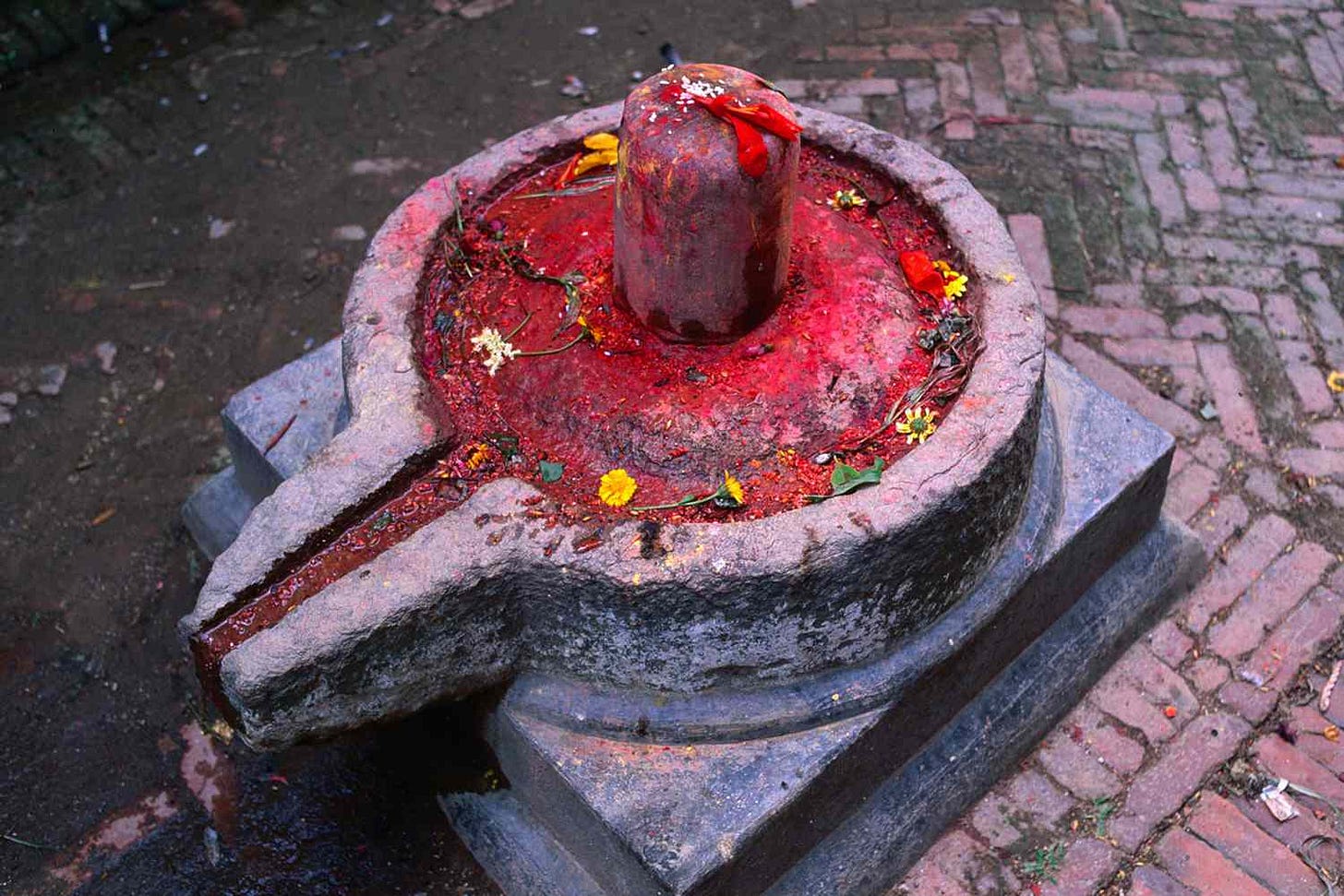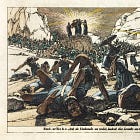Indiana Jones and the Temple of Doom is often considered the “red-headed step-child” of the original Indiana Jones trilogy. It holds a very interesting place in the canon and there are a few reasons for why that is, including its darker tone. It’s also a prequel to Raiders of the Lost Ark, a detail often missed by so many people. But, the macguffin in the film also holds an interesting place in the franchise because, unlike every other macguffin, they don’t exist in history, legend, mythology, or theology. The Sankara Stones are unique in the lore of Indiana Jones and is one of the reasons why the film sticks out to so many people.
So, if the Sankara Stones don’t exist in any mythological account, where did they come from? George Lucas and Steven Speilberg wanted Indiana Jones to go after historical artifacts, so why didn’t they choose one for this movie? Well, there was no public record of where the Sankara Stones came from, and who came up with them. But, what is known is that George Lucas was interested in exploring South Asian mythology but was unfamiliar with it so he picked Gloria Katz and Willard Huyck to write Indiana Jones and the Temple of Doom, because they supposedly had an interest and familiarity with Indian mythology. So they were likely the ones that came up with the stones. However, they have not said why they chose to create something new rather than adapt a real artifact.
Further deepening the mystery of who came up with the Sankara Stones, Lucas, in 2021, said that they “try to keep it within the realm of reality, but stretch it just a bit to make it more interesting and have more fun with it. And also, it’s based on some kind of real mythology that exists that people actually believe in. Sankara Stones was a bit of a reach, but in Asia, it’s not. As many people believe in the Sankara Stones as believe in the Holy Grail. That’s just Western, Eastern audience.” This quote would suggest that the Sankara Stones are part of Indiana mythology and not something created for the film. The mystery surrounding the Sankara Stones is one worthy of Indiana Jones himself. So if there is no Sankara Stone, then where could they have come from? To figure out the likely origin of the stones, we must go back to the film.
Here’s the story of the Sankara Stones as told in Indiana Jones and the Temple of Doom. Indiana, Willy, and Short Round are taken to an Indian village, where he’s asked to help them retrieve the stolen totem that they call a Sivalinga. Indiana asks if it was a smooth stone with three lines across it, to which they say yes. It’s only after one of the children shows up with a piece of parchment that Indiana speculates that the missing stone is one of the five Sankara stones. Indiana later tells a story explaining that five stones were given to a priest named Sankara by the Hindu god Shiva on Mount Kalisa. The story that the movie tells says that Sankara used the stones to convert many in India to the worship of Shiva. But let's backtrack a bit because everything in that story is a clue to the real-life origins of the Sankara Stones. See, the village elder doesn’t ask Jones to find a Sankara Stone, he asks him to find a Sivalinga. The first clue.
The hindu religion does worship something similar to the Sankara Stones. The smoothed surface rock with three lines across it are reminiscent of stones called Shiva Lingams, sometimes called Lingams or Sivalinga (This is the pronunciation the movie goes with). These are stones of crypto-crystalline quartz containing many mineral impurities. They come from the Narmada River in Western India, where they are gathered by villagers and polished into their traditional elliptical egg shape. It is said that they fell from heaven and are considered the symbol of the God Shiva, the Hindu god of destruction. So that lines up with the film in a few ways. There are clearly more than five of them, but the description of the stone lines up and their connection to Shiva lines up with the story that Indiana tells. Interesting to note about Shiva, is that the Hindu people believe that Shiva is the god of change as well as destruction. They believe he will destroy the world in order to recreate it.
In Sanskrit, lingam means sign, so literally translated the stones are Shiva’s sign. These stones are representations of Shiva and are found in every shrine and monastery that worships the god. They are meant to honor him. It is often represented within a disc-shaped platform, called the yoni. This is considered its “feminine” counterpart. The yoni consists of a flat dish-like element in which the lingam is placed. Together, they symbolize the merging of microcosmos and macrocosmos, the divine eternal process of creation and regeneration, and the union of the feminine and the masculine that recreates all of existence. It does seem to be intended to be phallic in nature. So a little different from the movie, but it was the 80s so they were restricted with how they could research. Sometimes a follower of Shiva would carry one of the stones around as they were often used in meditation, or used in healing ceremonies and rituals. There are multiple types that all have different names including smaller and wearable ones.
For the next clue to piece together the real life mythology behind the Sankara Stones, it’s time to return to the mythology of the film. Indiana talks about a priest named Sankara who climbed Mount Kalisa where Shiva himself gave him the stones. This is most likely a reference to the Indian Vedic scholar Adi Shankara who is credited with uniting the people under the Hindu faith. He lived in the 8th century and was a devout believer in Shiva. He didn’t care for Buddhist philosophers and by the 14th century he was seen as an avatar of Shiva. Some have even used Shankara when referring to Shiva. Something interesting is that, sometimes Harrison Ford calls them “Shankara Stones” and sometimes “Sankara Stones.” Officially, they are called Sankara Stones, so he’s probably mispronouncing what’s on the script, or perhaps he knew!
Anyway, Adi Shankara didn’t climb Mount Kalisa, because there is no such thing as Mount Kalisa. There is a Mount Kailash though, which is believed to be a holy mountain where Shiva lives. While no stories of Shankara were ever written of him climbing this mountain, it is close to Kedarnath, which was the last place anyone saw Shankara, and the location of a prominent Hindu temple that worships Shiva. Someone did climb the mountain in the 11th century though. A Tibetan Buddhist Yogi named Milarepa. He didn’t come down with any Stones. So, this is again where the film takes some “liberties.” but these liberties are beginning to look like half remembered stories pieced together with a poorly researched encyclopedia. But you can begin to see how the story takes shape through these historical references and piece together the mystery of the Sankara Stones.
If we keep it focused on Indiana Jones and the Temple of Doom, that’s where the story ends. The answer to whether or not the Sankara Stones exist is “kind of.” Everything that the film tells the audience does connect to a real life story or artifact, just not in a clean way like the Ark of the Covenant or the Holy Grail. To claim that the artifacts are worshiped like the Grail as Lucas said above, is just not true and you have to do a fair bit of work to reach any sort of conclusion as to where the idea of the macguffin came from.
One last thing to dive into is the Thuggee cult. So that is a real “cult” as they’re described in the film. But modern-day historians aren’t sure if they were meant to be an organized group or just a group of people that were attacking the British colonizers. It does sound like something the British would make up because “everyone in India loved them”. There’s no evidence to support that they did ritualistic killings though. The word “thuggee” comes from the Hindu word “thagī”, which means swindler or deceiver. This is also where we get the word “Thug”. So it’s generally accepted that if there was an organized cult named the Thuggee’s, they worshiped the Hindu god Kali. But, worshiping Kali is pretty common throughout India.
While Shiva symbolizes “purusha”, the universal unchanging aspect of reality, or pure consciousness. Kali represents “Prakriti”, nature or matter. The two of them are seen as necessary sides of all reality. Kali is meant to be the feminine counterpart to Shiva. She is regarded as the ultimate manifestation of Shakti, the primordial cosmic energy, and the mother of all living beings. The goddess is stated to destroy evil in order to defend the innocent. Kind of doesn’t seem to line up with the film, or how the British characterized them during their occupation. Fun fact: “Kali Ma” means “divine mother”. It doesn’t seem like, when you really get into it, that the Thuggee’s were an evil cult as depicted in the film. It is more likely that the film has fallen for the same racist lies that have persisted throughout history.
Indiana Jones and the Temple of Doom is a really interesting movie. At time’s it frames Indiana culture with respect, but then there’s an extended dinner scene where Willy and Short Round react to fake Indiana dishes because that’s what white people thought Indiana people ate back then. The perpetuation of the third world idea. History remembers the Thuggee’s as a cult, but perhaps they were just defending their homes from an invading colonization force. Unlike the Holy Grail, or the Crystal Skull, or the Ark of the Covenant, the Sankara Stones as depicted in the film are a vast departure from the Shiva Lingams. Gloria Katz and Willard Huyck are not experts in mythology and likely pieced a macguffin together based on half remembered stories and ideas they heard or read. They are screenwriters and not history professors. But one can’t help but wonder what a more accurate macguffin might have looked like. Still, it’s fun to piece together the story of the Sankara Stones.
Check out the episode we filmed of this report
Sources
Indy in the Classroom - The Archaeology Of Indiana Jones and the Temple Of Doom: http://www.indyintheclassroom.com/projects/archaeology/temple.asp
Star Wars Explained - The REAL History of the Sankara Stones - Indiana Jones Explained
Empire Magazine - The Real Story Behind the McGuffins: https://www.empireonline.com/movies/features/indiana-jones-mcguffins/
Encyclopedia.com - The Thuggee: https://www.encyclopedia.com/science/encyclopedias-almanacs-transcripts-and-maps/thuggee#:~:text=No%20organized%20cult%20of%20killers,creation%2C%20preservation%2C%20and%20destruction
Medium.com - Shiva and Adi Shankara: https://medium.com/sanatana-dharma/shiva-and-adi-shankara-32d79c0b5ca3
Express - Indiana Jones George Lucas: Temple of Doom’s ‘Sankara Stones were a bit of a reach: https://www.express.co.uk/entertainment/films/1411558/indiana-jones-temple-of-doom-sankara-stones-george-lucas-interview-harrison-ford
Indiana Jones Wiki - Sankara Stones: https://indianajones.fandom.com/wiki/Sankara_Stones
Britanica - Shiva: https://www.britannica.com/topic/Shiva
LearnReligions.com - What is Shiva Linga: https://www.learnreligions.com/what-is-shiva-linga-1770455#:~:text=The%20Lingam%20stones%20are%20used,Das%2C%20Subhamoy

